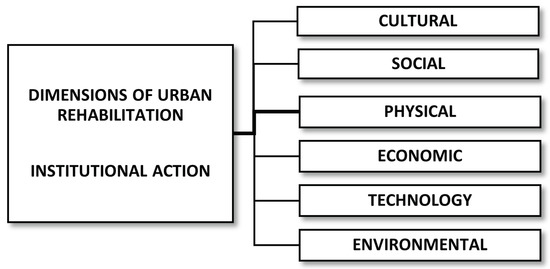Urban Conservation
A topical collection in Urban Science (ISSN 2413-8851).
Viewed by 7650Editor
Topical Collection Information
Dear Colleagues,
Urban conservation currently represents simultaneously one of the most fervent and problematic fields in the domain of urban science and architecture. Despite it being such a topical issue, a gap still exists between the architectural scale and the urban one of conservation. In the first case, there is a solid theoretical basis, albeit with different approaches and beliefs, which forms the starting point for a well-established practice. Procedures and methods of architectural conservation are now almost standardized, even if the various approaches reflect cultural trends diversified in time and space. In the second case, a common ground is missing. Moreover, urban conservation is related to both built heritage in its material features as well as social patterns: this twofold character involves a deep complexity in identifying the specific object (from an object- to people-centred approach), proper strategies, and consequently, the required skills. In a certain sense, while in many other fields and applied sciences soft skills are typical, in the field of urban conservation, hard skills are still to be defined.
This Topical Collection aims to collect original peer-reviewed contributions with the ambition to start to bridge the theoretical and methodological gap concerning urban-scale conservation compared to architectural conservation as well as urban studies. Topics of interest include current research on both theoretical aspects and design practice. Contributions oriented on the following themes are particularly welcomed:
- Techniques of urban survey;
- Urban history and archaeology;
- Small historical settlements/inner areas;
- Historic urban landscapes;
- HUL approach in theory and practice;
- Urban morphology;
- Urban conservation: theory and techniques;
- Preservation planning;
- Historic aggregated buildings and reduction of seismic vulnerability;
- Sustainable reuse of historic centres.
Dr. Sergio Cardone
Collection Editor
Manuscript Submission Information
Manuscripts should be submitted online at www.mdpi.com by registering and logging in to this website. Once you are registered, click here to go to the submission form. Manuscripts can be submitted until the deadline. All submissions that pass pre-check are peer-reviewed. Accepted papers will be published continuously in the journal (as soon as accepted) and will be listed together on the collection website. Research articles, review articles as well as short communications are invited. For planned papers, a title and short abstract (about 100 words) can be sent to the Editorial Office for announcement on this website.
Submitted manuscripts should not have been published previously, nor be under consideration for publication elsewhere (except conference proceedings papers). All manuscripts are thoroughly refereed through a single-blind peer-review process. A guide for authors and other relevant information for submission of manuscripts is available on the Instructions for Authors page. Urban Science is an international peer-reviewed open access monthly journal published by MDPI.
Please visit the Instructions for Authors page before submitting a manuscript. The Article Processing Charge (APC) for publication in this open access journal is 1600 CHF (Swiss Francs). Submitted papers should be well formatted and use good English. Authors may use MDPI's English editing service prior to publication or during author revisions.
Keywords
- urban conservation
- sustainable urban development
- urban survey
- historic urban landscape
- preservation planning







